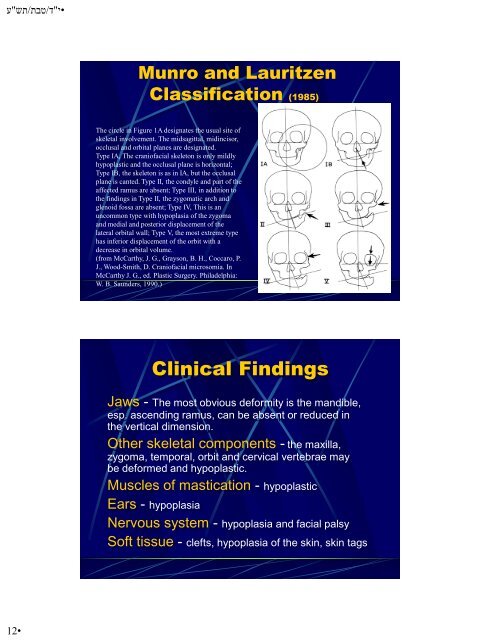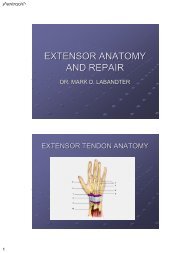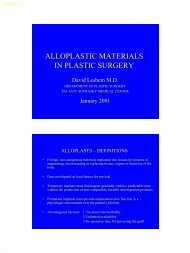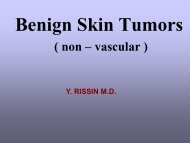Hypoplasia-Hyperplasia
Hypoplasia-Hyperplasia
Hypoplasia-Hyperplasia
Create successful ePaper yourself
Turn your PDF publications into a flip-book with our unique Google optimized e-Paper software.
ע"<br />
שת/<br />
תבט/<br />
ד"<br />
י•<br />
12•<br />
Munro and Lauritzen<br />
Classification (1985)<br />
The circle in Figure 1A designates the usual site of<br />
skeletal involvement. The midsagittal, midincisor,<br />
occlusal and orbital planes are designated.<br />
Type IA, The craniofacial skeleton is only mildly<br />
hypoplastic and the occlusal plane is horizontal;<br />
Type IB, the skeleton is as in IA, but the occlusal<br />
plane is canted. Type II, the condyle and part of the<br />
affected ramus are absent; Type III, in addition to<br />
the findings in Type II, the zygomatic arch and<br />
glenoid fossa are absent; Type IV, This is an<br />
uncommon type with hypoplasia of the zygoma<br />
and medial and posterior displacement of the<br />
lateral orbital wall; Type V, the most extreme type<br />
has inferior displacement of the orbit with a<br />
decrease in orbital volume.<br />
(from McCarthy, J. G., Grayson, B. H., Coccaro, P.<br />
J., Wood-Smith, D. Craniofacial microsomia. In<br />
McCarthy J. G., ed. Plastic Surgery. Philadelphia:<br />
W. B. Saunders, 1990.)<br />
Clinical Findings<br />
Jaws - The most obvious deformity is the mandible,<br />
esp. ascending ramus, can be absent or reduced in<br />
the vertical dimension.<br />
Other skeletal components - the maxilla,<br />
zygoma, temporal, orbit and cervical vertebrae may<br />
be deformed and hypoplastic.<br />
Muscles of mastication - hypoplastic<br />
Ears - hypoplasia<br />
Nervous system - hypoplasia and facial palsy<br />
Soft tissue - clefts, hypoplasia of the skin, skin tags












